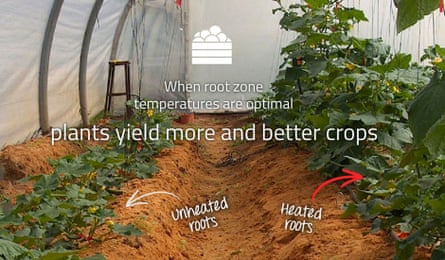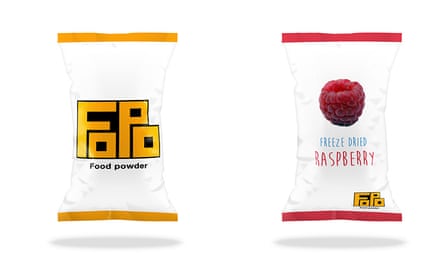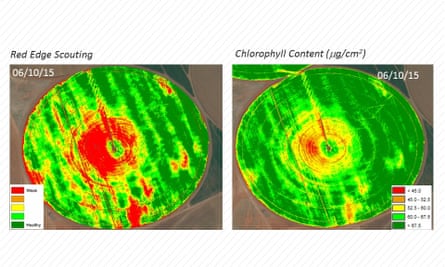The raw numbers make for daunting reading. One in 10 people out of the current global population of 7.4 billion already goes hungry. Crop yields that soared in the decades after the second world war are flatlining, and the UN predicts there will be 2.3 billion more mouths to feed by 2050.
So how to keep people fed without trashing the planet? Some estimates put the contribution of the global food system to manmade greenhouse gas emissions as high as a third. Unsustainable farming methods are depleting soil nutrients significantly faster than they can be replenished. Rising demand for meat is driving deforestation as land is cleared to grow feed for livestock.
Green shoots of change, however, are starting to emerge, with researchers seeking out possible solutions on the borders between disciplines. The startup and venture capital culture, driving rapid change in other spheres, is gaining a foothold in food and agriculture, and spreading from its stronghold on the US west coast.
The root of the problem
One idea gaining traction, particularly in hotter climates, is a new way to keep crop roots at optimum temperatures regardless of the weather.
Farmers have made increasing use of greenhouses and technologies that can heat and cool both the air around plants and the soil beneath them, but Roots Sustainable Agricultural Technologies, based near the Israeli city of Netanya, claims its system is smarter, cheaper and greener than existing technologies.
“If the temperature difference above and below the surface is too big, plants are unable to efficiently transport nutrients from their roots to the canopy,” says Sharon Devir, an agricultural engineer and co-founder of the company.

Soil close to the surface is heated and cooled by the warmth of the sun or lack of it. Roots SAT’s system uses coils of water-filled pipes installed at depths of up to 7 metres to either heat or cool the soil around crop roots. It uses alternately isolated and non-isolated pipes around roots to do so without wasting energy, and can also discharge water, fertiliser and pesticides into root zones.
The technology is unique in being able to both heat and cool roots, and in using ground source heat exchange. Many existing greenhouse systems heat the air rather than soil, and use expensive boilers to heat water that is circulated in pipes.
Roots SAT claims to have achieved increased yields of 10% for lettuces, 25% for strawberries and 30% for basil, and earlier cropping and energy savings of up to 80% compared to conventional heating systems in pilot studies in Israel. It has installed its system to test and demonstrate it at two farms in Spain growing cucumbers and strawberries, and is seeking $4m (£2.7m) in funding to expand its operations.
In the same way major pharmaceutical companies have struggled to innovate internally in recent years, big agricultural players have also stuck in large part to what they know.
“There hasn’t been a great deal of disruption in the food and agro-technology sector in recent decades, much less so than in other sectors,” says Jan Meiling, the director of StartLife, an incubator for mainly food and agricultural startups based at Wageningen University and Research Centre in the Netherlands. “It’s traditionally been a very conservative industry that is set up in a way that does not facilitate radical innovation.”
At a recent conference, Louise O Fresco, the president of the university, said: “The game has changed. It wasn’t the big taxi companies that developed Uber, or Hilton that developed Airbnb. What we need is radical innovation.”
Waste not, want not
While many agriculture innovators are seeking to increase yields, others are coming at the problem from a different angle. The United Nations Food and Agriculture Organisation estimated that about 1.3bn tonnes of food is wasted a year globally, or about one-third of total production. A large proportion of the waste comes about because of short shelf life and logistical difficulties.
FoPo, based in Bremen, Germany, hopes to tackle hunger and waste simultaneously by collecting fruit and vegetables destined to be discarded and turning them into powder in order to significantly extend their shelf lives.

The startup is, for instance, working with a German importer who throws away 27 tonnes of bananas a week because they ripen too quickly.
It plans to source batches of fast-perishing grapes, bananas, strawberries, cauliflower, broccoli, calamansi and durian that are close to their expiry dates from farmers and suppliers, and turn them into powders using freeze- and spray-drying.
“It’s an absurd situation that in the 21st century one-third of the world’s food is being wasted while 800 million people go hungry,” says FoPo’s co-founder Gerald Perry Marin. “It really is time we got a bit smarter and found ways to address this.”
FoPo wants to supply its powdered foods to those providing humanitarian aid as well as large companies who might see it as an opportunity to bolster their corporate responsibility credentials.
Later this year the company will launch its website selling direct to the public, aiming its powdered fruit and vegetables, priced about £2.50 per 50g, at consumers concerned about food waste.
A potentially transformative new technology developed by another Israeli startup shows how innovation often comes from solutions developed in other sectors. Sensilize, based in Haifa, recently launched a remote sensing service providing farmers with information that allows them to better tailor what they do to crops to conditions on the ground.
The system is an advanced form of a trend that has seen large farms increasingly adopt “variable rate technology”, to vary seeding, irrigation, fertilising and pesticide use according to information gathered by a variety of sensors to boost yields and cut costs.
“Previously a farmer spraying fertiliser used the same amount on the whole field,” says Sensilize’s co-founder Robi Stark. “However land and crops are not homogenous so increasingly we are seeing the ability to act differentially to save time and money.”
Stark and his colleagues used expertise gathered while working on military remote sensing applications to create an aircraft-mounted sensor that measures the proportion of sunlight being reflected by crops.
Called the Robin-Eye, it analyses levels of reflected light in different wavebands to reveal levels of pigments – green chlorophylls, orange carotenoids and the red anthocyanins.

Analysis of the information can tell farmers about the health of their crops, giving them early warning of any problems and allowing them to apply fertilisers, pesticides and water more efficiently.
Sensilize’s system calibrates information according to varying seasonal, atmospheric and light conditions, allowing comparison over time.
The company, which has already demonstrated its technology to customers in Israel, South Africa, France and the UK, sells its data to those advising farmers at prices ranging from $2 a hectare for cereals to $15 a hectare for higher value crops such as grapes.
Stark’s vision of tomorrow’s agriculture is hi-tech. “Our system can help bring about the internet of things on farms,” he says. “Drones will fly above gathering information which will be analysed so that swarms of robots can go in and spray crops much more efficiently on a larger scale.”
Other companies at the Wageningen conference were focused on developing alternatives to meat and fish as sources of protein. Attendees were offered mealworms farmed in the Netherlands by Proti-Farm, seaweed pasta made by Amsterdam-based Seamore Foods, a convincing plant-based chicken substitute from Washington-based Plenti@Protein, washed down by algae-based drinks from Dutch company Algreen.
New approaches such as these can all play a role in tackling the challenge of feeding the world’s rapidly growing population sustainably. However, to become solutions, ideas need funding. A report published in February by the online crowdfunding investment platform AgFunder found investors who had shied away from the sector were starting to take notice.
Global investment in agriculture technology has been approximately doubling annually for the last four years, the report says – from $500m in 2012 to $4.6bn last year. But while agriculture is responsible for 10% of global GDP, just 3.5% of venture capital investments go to the sector. US companies still dominate, but less so. While in 2014 they accounted for 90% of major investment deals, in 2015 the proportion was 58%.
“Despite huge inefficiency and waste, there has been relatively little investment in agricultural technology and few entrepreneurs working in the sector,” says Adam Anders, a managing partner at Anterra Capital, a venture capital company that focuses on food and farming.
“What we’re seeing now is a sentiment change with big corporates really paying more attention to innovation and investment, some in a defensive way and others genuinely looking at it as the future of their business. It’s a change that is totally new to a sector that has not had external, entrepreneur-led innovation as part of its make-up.”
This piece is part of our Half full series. If you have suggestions of stories, trends, innovations and people that you’d like to see included in this series please share them in the form below.

Comments (…)
Sign in or create your Guardian account to join the discussion